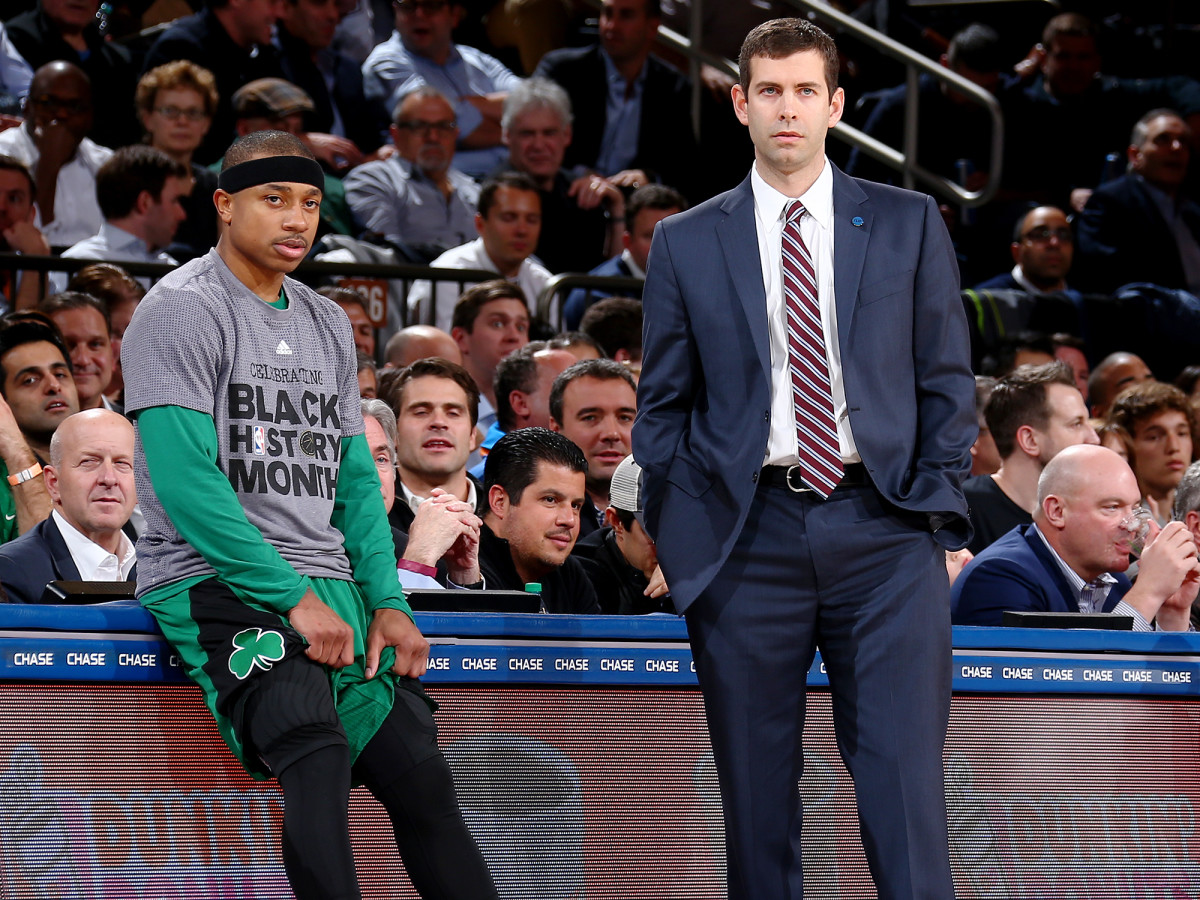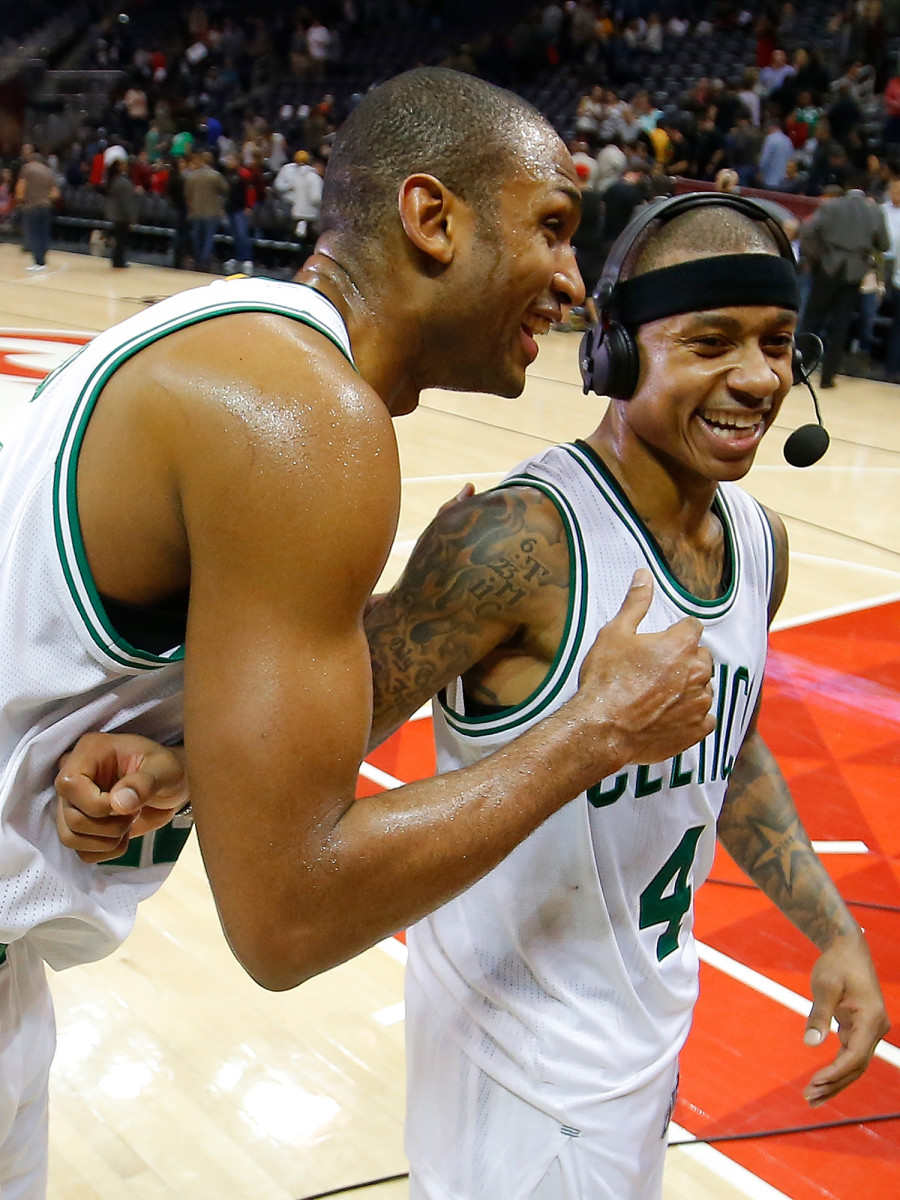NBA Off-Season Preview: Celtics' Win-Now Approach Could Become Costly

While the NBA playoffs are still going, the 2017 off–season is rapidly approaching for many teams with massive decisions to make.CBA expert Danny Lerouxbreaks down the major challenges and opportunities for theBoston Celtics in The Crossover's NBA Summer Preview series.
While their playoff run ended in dispiriting fashion at the hands of Cleveland, Boston is in a truly remarkable position moving forward because the team with the best record in the Eastern Conference also has significant future assets at their disposal. Beyond significant cap space, the Celtics also have team-friendly contracts on their books so they can clear even more if necessary to add special talent through free agency or use them to facilitate massive trades.
NBA Mock Draft 4.0: Fultz, Ball, And Then What?
On top of those possibilities at the top of their roster, general manager Danny Ainge also has the flexibility to wait on big man Kelly Olynyk because he cannot sign an offer sheet until the end of the moratorium, presumably enough time for the major unrestricted free agents to make their decisions. As such, he can play it by ear depending on what players commit and how big an offer sheet Olynyk can inspire. Beyond all of their other talent, Boston also holds the rights to two 2016 first-round picks, Guerschon Yabusele and Ante Žižić, who should come over on team-friendly rookie scale contracts this summer.
Here are three key storylines to watch for the Celtics this off-season:

Present vs. Future: Ainge’s most important question to answer is what timetable the Celtics want to adopt. Isaiah Thomas, Al Horford and Jae Crowder all line up with a win-now approach, but Boston could also pivot and focus on the long term with Jaylen Brown and their armada of draft picks, which also includes Brooklyn’s unprotected 2018 first-rounder. While some may see these as not mutually exclusive options, the Eastern Conference finals served as a reminder of how far the Celtics would need to go in order to become an elite title contender next season.
Big swings: One of the determining factors for Boston’s approach has to be what options are on the table. Gordon Hayward would be a game-changing wing and played under Celtics head coach Brad Stevens at Butler. What’s more, signing him would not require sacrificing any assets so the front office could coalesce a few high-end pieces to add another All-Star like Jimmy Butler. Considering their incredible collection of pieces, the Celtics should ask about every elite young talent in the league, including Anthony Davis. Those discussions will clarify what it will take to reach the highest echelons now and in the future.
No. 1 pick: Incredibly, the first overall pick is third on this list because of the Celtics’ other options. If they keep the choice, making the right selection is vitally important because of the possibility that player becomes a cost-controlled star and/or a significant asset for a later blockbuster trade. Markelle Fultz and Lonzo Ball appear to be the favorites presently, but the Celtics owe it to themselves to cast a wide net and evaluate all of their options, including moving the pick.
Potential Free Agents: Kelly Olynyk (Restricted), Amir Johnson (Unrestricted), Gerald Green (Unrestricted), Jonas Jerebko (Unrestricted), Tyler Zeller (Non-Guaranteed), Demetrius Jackson (Partial Guarantee) and James Young (Unrestricted)
Likely Summer of 2017 Cap Space: $18.4 million
Realistic Maximum Summer of 2017 Cap Space (using $101M estimate): $26.1 million
2017 Draft Assets: Brooklyn’s first-round pick (first overall) and second-round picks from the Timberwolves (No. 37), Cavaliers (No. 53) and Clippers (No. 56)

Potential Targets: The Celtics should incorporate a “high-low” strategy, depending on how they answer the present vs. future question discussed earlier. They are an incredibly desirable destination for elite free agents, with the 27-year old Hayward serving as the most logical target. They could also check in on talents like Paul Millsap and Serge Ibaka if they want to embrace a win-now approach. Otherwise, they should keep bargain hunting, an underrated part of Ainge’s success the past few off-seasons. Invariably, some players will strike out on a more limited open market and Boston should be ready to pounce on those individuals if the big fish head elsewhere. The Celtics’ biggest mistake would be spending too much on inferior talent because their future is too bright to sell short.
Pressure Scale: 10. While other franchises are dealing with more risk than the Celtics, no team faces more complicated decisions. What makes their situation even more fraught is that both Isaiah Thomas and Avery Bradley will be unrestricted free agents next summer. Their starting backcourt will each receive serious interest from a variety of teams so the front office has to start the 2017–18 season with a clear vision of what they expect and want moving forward. On top of that, ownership’s willingness to pay for years to come looms large as well, since spending now would mean significant salary and luxury tax costs moving forward. Ainge can build a team worthy of that commitment but we have seen successful runs derailed prematurely for that reason before. The Celtics’ ceiling, floor and the permanence of some key decisions makes theirs the most pressure-packed off-season in the entire NBA.
The Marcus Smart Brand Is Mayhem
State of the Franchise: To Be Determined. Boston won 53 games with a roster full of players both in and before their primes, looking like a team that could be relevant for a long time if they simply keep it together. However, the continuing heist that was the Garnett/Pierce trade has created an altogether different set of opportunities and expectations. Ainge can prioritize the near term or long term, using their other assets to maximize the chosen window. He could also try to accomplish competitiveness in both timeframes, but that will likely come at the cost of reducing their ceiling the entire time, which would be justifiable too if that is what ownership prefers.
Looming raises for Thomas and Bradley make the win-now approach extremely costly for 2018 and beyond, but it is hard to turn down a chance at immediate title contention for the possibility of eventual dominance. Free agents like Hayward will help make this decision too but the Jazz swingman is particularly intriguing because he is young enough to help out when the Nets picks are ready for prime time. If he stays in Utah, Boston’s decisions get significantly tougher. They have the assets to acquire Paul George or Jimmy Butler, but both will be free agents within two seasons and will provide less surplus value on their next contracts for a team with so many options. Younger stars are intriguing but incredibly hard to come by and depend almost entirely on their current team being willing to deal. Considering the ill effects of waiting, this is finally put up or shut up time for a patient and wildly successful front office.
